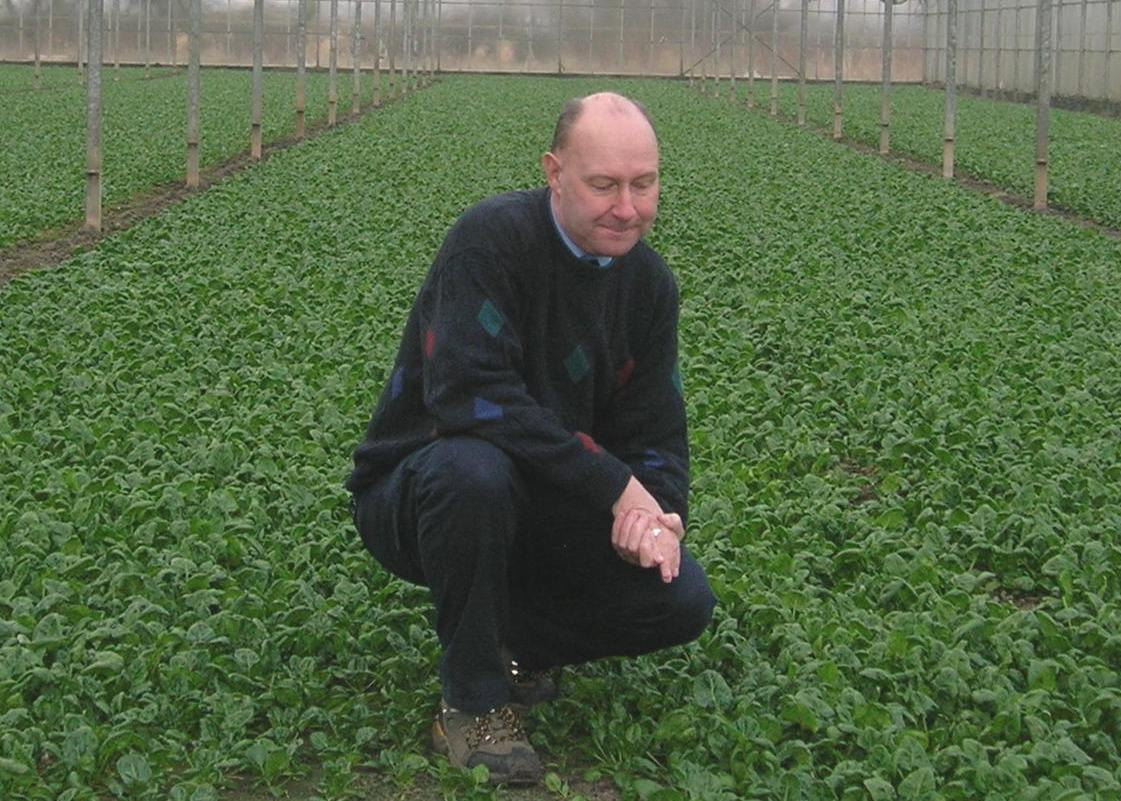
With the continuing wet, warm and humid conditions, specialist agronomist John McCulloch of County Crops considers this year to be a particularly high pressure year for a number of diseases in brassicas and lettuce and is concerned about controlling these diseases adequately but without increasing resistance risk.
Advising growers in the North West, John McCulloch says that he has seen more Sclerotinia this year than ever before. "I have seen a lot of it in the usual crops such as lettuce, celery, carrots and oilseed rape and also in some more unusual crops such as calabrese. These high levels can be put down to this year’s terrible weather and high rainfall, which have encouraged Sclerotinia as well as other wet weather diseases including ring spot (Mycosphaerella brassicola), white blister (Albugo candida) and Botrytis," says John.
John advises his growers to adopt an appropriate fungicide programme, but with fungicide resistance and crop safety being top of mind. "We need to produce high quality vegetable brassicas with good visual appeal and this means no blemishes caused by disease. This means starting the programme early with a fungicide such as Signum. Signum is a marvellous fungicide but it needs to be used at the right time which is early, rather than late. It can be mixed with a triazole as part of a resistance strategy and then followed by other fungicides with different modes of action. It also is a benign product when it comes to crop safety. You want to avoid any treatment that could dewax the crop. County Crops have nine weather stations that help flag up when disease prevention measures are needed and make sure that we use fungicides only when necessary," advises John.
Signum is also advised as the first spray in outdoor lettuce crops. "It gives an excellent start to the programme, being active against all the key lettuce diseases including Sclerotinia and Botrytis, with good activity on mildew too. It is usually followed by a metalaxyl-containing fungicide and then Invader (dimethomorph + mancozeb). In lettuce and indeed in vegetable brassica crops, it is so important to minimise any resistance pressure on any one fungicide group. We already have resistance to metalaxyl in Botrytis."
Mr. McCulloch points out that there are fewer and fewer effective products from which to choose. "If the EU decides to limit this any further in the future, we could be in a very difficult situation, not just in controlling diseases or weeds but in growing vegetable and salad crops in the UK altogether. It is vital that we retain the armoury of products that we have for these important food crops."
"Signum is regarded as an excellent fungicide for the control of all the important brassica diseases - dark leaf spot and white blister plus useful control of ringspot. Both actives in the product, boscalid and pyraclostrobin, also have activity on powdery mildew. This broad-spectrum control makes Signum a key brassica fungicide and one well accepted by growers and retailers alike," says Simon Townsend, Product Stewardship Manager for BASF.
BASF advise Signum should be applied in both brassicas and lettuce as a protectant before the first signs of disease. In brassicas the dose rate is 1 kg/ha in water volumes of 200 litres and in lettuce 1.5 kg/ha in water volumes of 200 to 900 litres. Further sprays can be made at 3 to 4 week intervals, alternating with products from a different resistance group. In lettuce Signum can be applied from the 1st of April up until the 31st October.
Background Notes - Signum contains 267g/kg boscalid and 67g/kg pyraclostrobin, formulated as a WDG. It is a protectant and systemic fungicide. It is recommended in Brussels Sprouts for the control of white blister (Albugo candida) and ringspot (Mycosphaerella brassicola) and in cabbage and cauliflower for the control of dark leaf spot (Alternaria brassicae) and ringspot. It is applied as a protectant spray or at first signs of disease at a dose rate of 1 kg/ha in a minimum of 200 litres of water. Further sprays can be made at 3 to 4 week intervals. It has a harvest interval of 14 days in brassicas.
Signum is also recommended in outdoor and protected lettuce for the control of Sclerotinia spp, Rhizoctonia solani and Botrytis cinerea. It is applied from 1-2 weeks after planting at a dose rate of 1.5 kg/ha in 200-900 litres of water. Two applications can be made to the crop. Signum can be applied to outdoor and protected lettuce between the 1st April and 31st October. No more than 6 kg/ha of Signum can be applied to the same area of land per year. It has a harvest interval of 14 days in lettuce.
Signum has 11 SOLAs covering more than 20 crops including many protected leafy herbs, protected and outdoor leafy brassica crops grown for baby leaf production.
For further comment and information please contact Simon Townsend, BASF on 01845 537072
